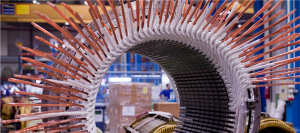Electric drive technology
Electric drive technology – Research project on production technology change
What it’s all about
The electric motor forms the heart of the electric drive by converting electrical energy into mechanical energy. Electric drives are used in numerous industrial sectors, including metal processing, industrial production, mining, power generation, shipbuilding and the oil and gas industry. Their advantages include environmental friendliness, easy transmission of the required energy over long distances, high efficiency in energy conversion and high availability.


Objectives of the research project
In the second project phase (2024-2026) of EA 2.0, the research and industry partners are continuing their work to further optimize the development and production of electric drives in two key areas. The aim is to make production more efficient and to further reduce the use of materials and energy without compromising performance. The knowledge gained in phase 1 (2020-2023) will serve as a starting point for further progress.
Motivation
Electric drives are widespread, and their importance continues to grow as climate change progresses. Classic combustion engines are increasingly giving way to electric drives. In addition to availability and efficiency, higher power density (power in relation to mass) and sustainability (material selection and utilization, recycling, service life, energy efficiency) are becoming the focus of the development of new electric machines. Implementing these requirements and meeting short delivery times in the face of global competition pose growing challenges for traditional production sites.
In order to remain competitive in the long term, disruptive approaches are therefore required that fundamentally redesign and manufacture electrical machines. Digitalization opens up enormous opportunities in this area.
This project is co-funded by the European Union.
